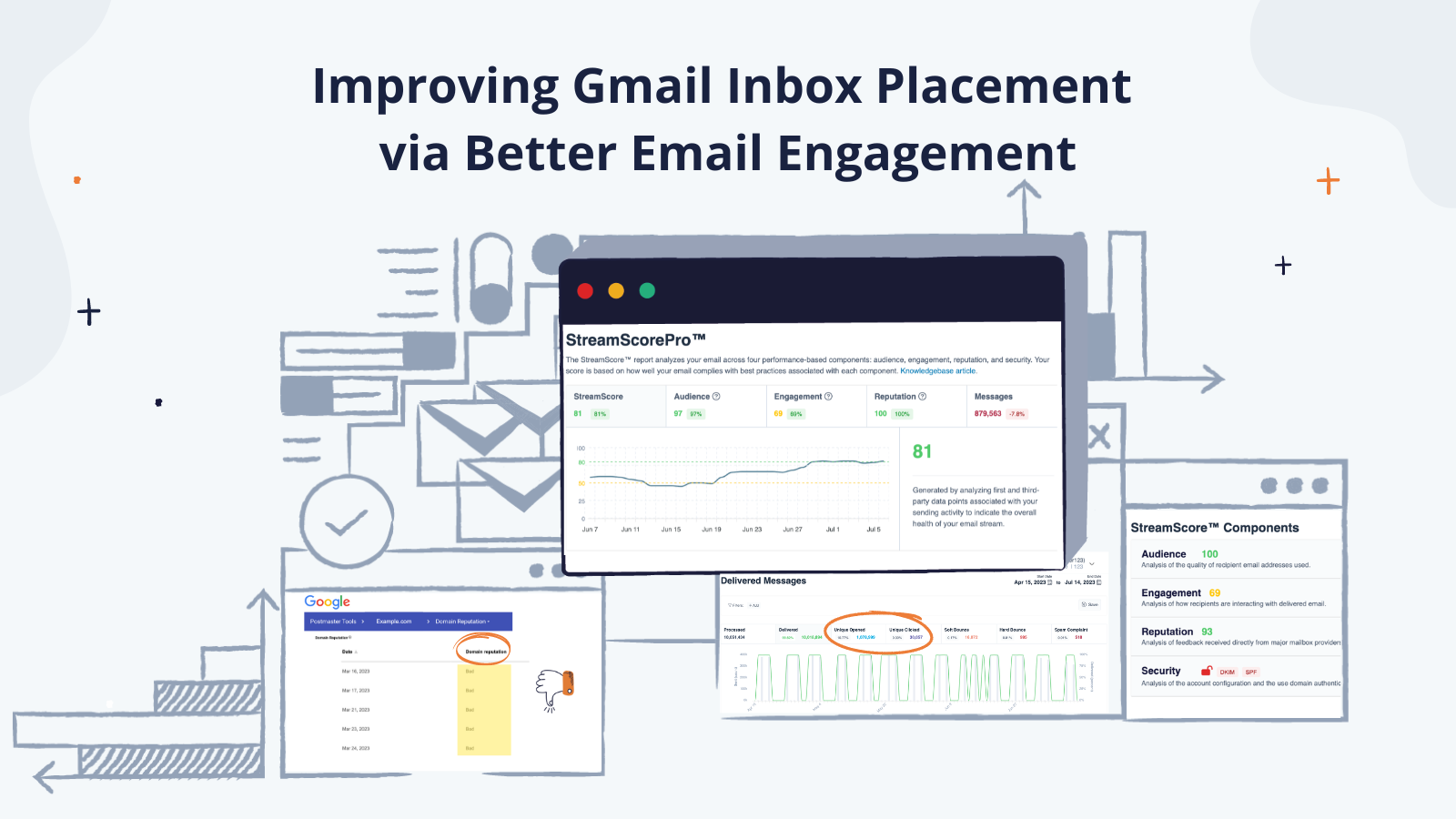
Sometimes email is a mystery. Well, most of the time it’s less about email itself being a mystery than it is email performance. One of our senders here at SocketLabs had an email engagement mystery we were well suited to solve as their email service provider (ESP).
Our sender had a sizable presence in a very engaged hobby community with a popular magazine with lots of subscribers. But times change. They’ve since moved from paper in mailboxes to pixels on the screen, but their transition from print to digital hasn’t been as fruitful as they hoped. Without earning clicks from emails to drive them to the magazine, they lose readership numbers and put their advertising partnerships at risk.
Let’s follow our resident email data expert Brian Godiksen as he dives headfirst into the data to uncover the source of their poor email performance.
Solving an Email Engagement Mystery
We’re putting Brian on the case because he has more than a decade of experience with email performance data and optimizing for better results. He’s an email Sherlock Holmes and luckily, SocketLabs built a Watson to provide the support he needs…StreamScore.
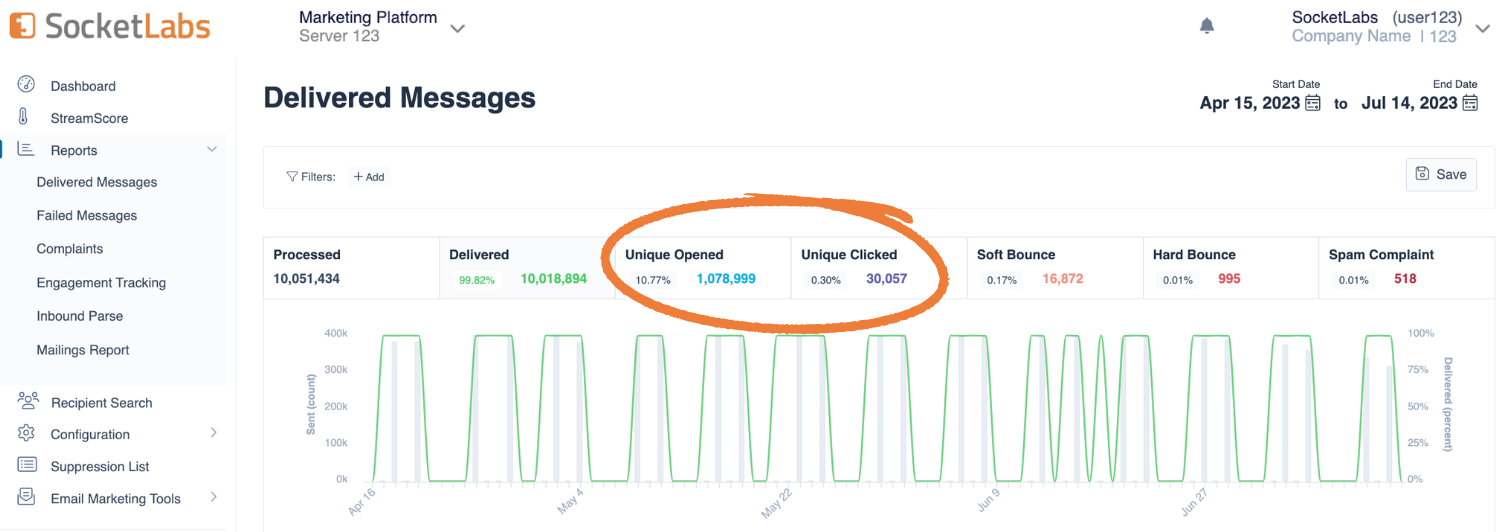
In the screenshot above, you’ll see the problem area circled in SocketLabs orange. It’s time to look at the fact Brian sees: Even though they have a 99% delivered rate, their open rate is just above 10% and their click rate – hold on to your butts – is 0.30%. Yes, there is a decimal before the three.
Since StreamScore provides an overall look at all sending behavior, Brian first sees our sender maintains a consistent cadence of emails to subscribers. Mailbox providers (MBPs) love consistency, so they’re not very likely to block, throttle, or otherwise hinder mail delivery. Brian can rule out sporadic sending volume and frequency as negative factors impacting their overall sender reputation.
They don’t suffer from major spam complaint issues so they must have an adequate email collection system – essential! Getting recipients to opt-in is crucial for maintaining a good sender reputation and reducing negative feedback.
When you step back from these stats and look at them in the context of StreamScore, you can see how low engagement like the raw open and click data is negatively affecting their scores for both engagement (of course) and overall reputation.
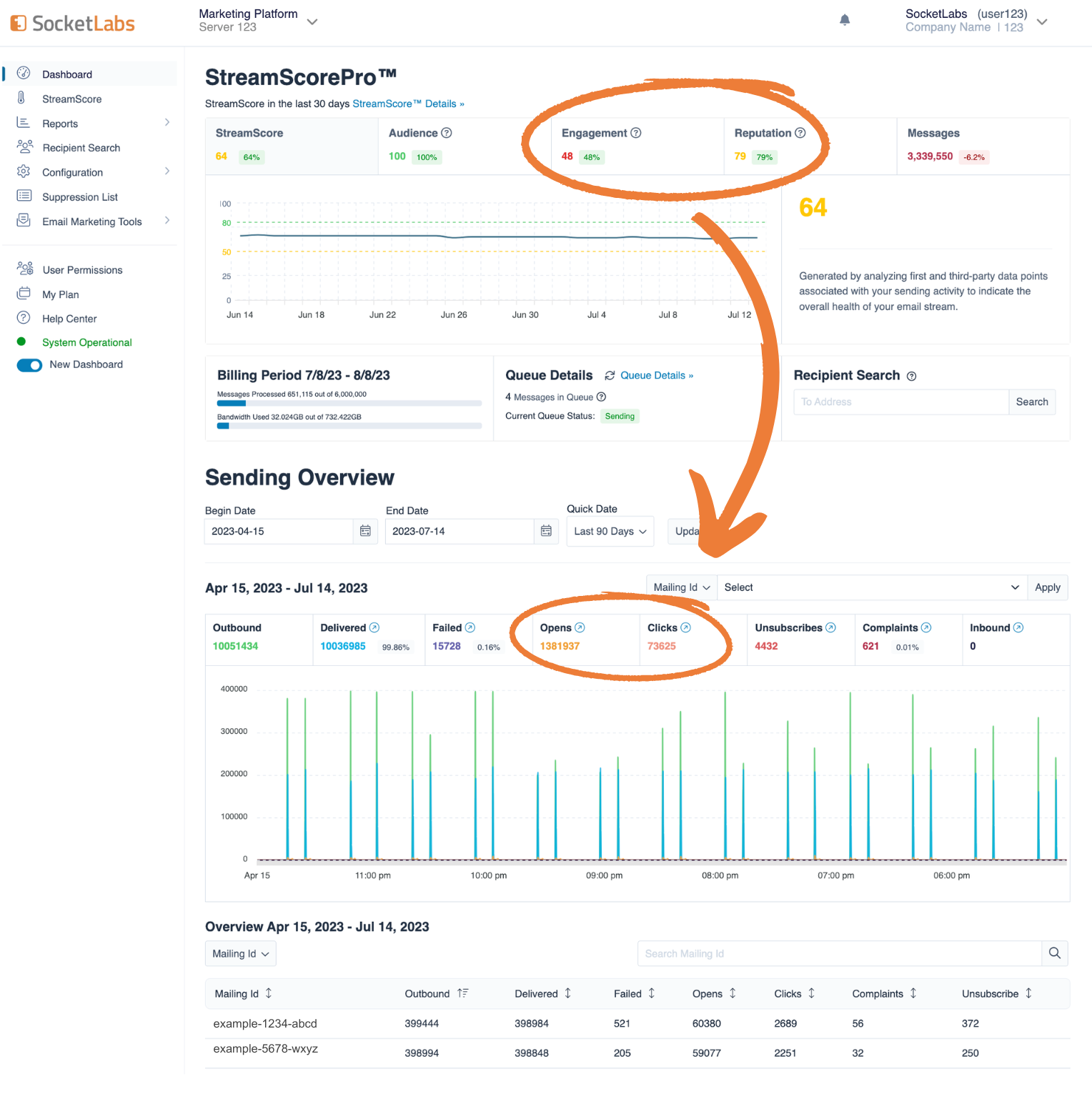
This cyclical relationship means without improvement in engagement, reputation cannot improve, and without a boost in reputation, inbox placement will become increasingly challenging…thus making engagement even harder to earn.
While Brian might see these kinds of issues every day, he knows this sender does not, and they’ll be shocked to hear his findings. So, Brian knows he needs to help. But how?
Gathering Evidence for the Email Engagement Caper
Brian’s next move is to look at their MBP-level stats to see if there are any anomalies across providers.
This makes it much simpler to get away from sweeping generalizations like believing engagement is just a lack of interesting email content. Sometimes it’s not that simple. Probably most times.
One of the cool things about SocketLabs is our ability to both give the surface-level data you can get from any ol’ ESP, but also destination-level stats typically only accessed from those same ESPs by basically pulling teeth out of them. Who wants to download data, manipulate the data, analyze, and agonize over the data?
SocketLabs makes it easy, as you can see here.
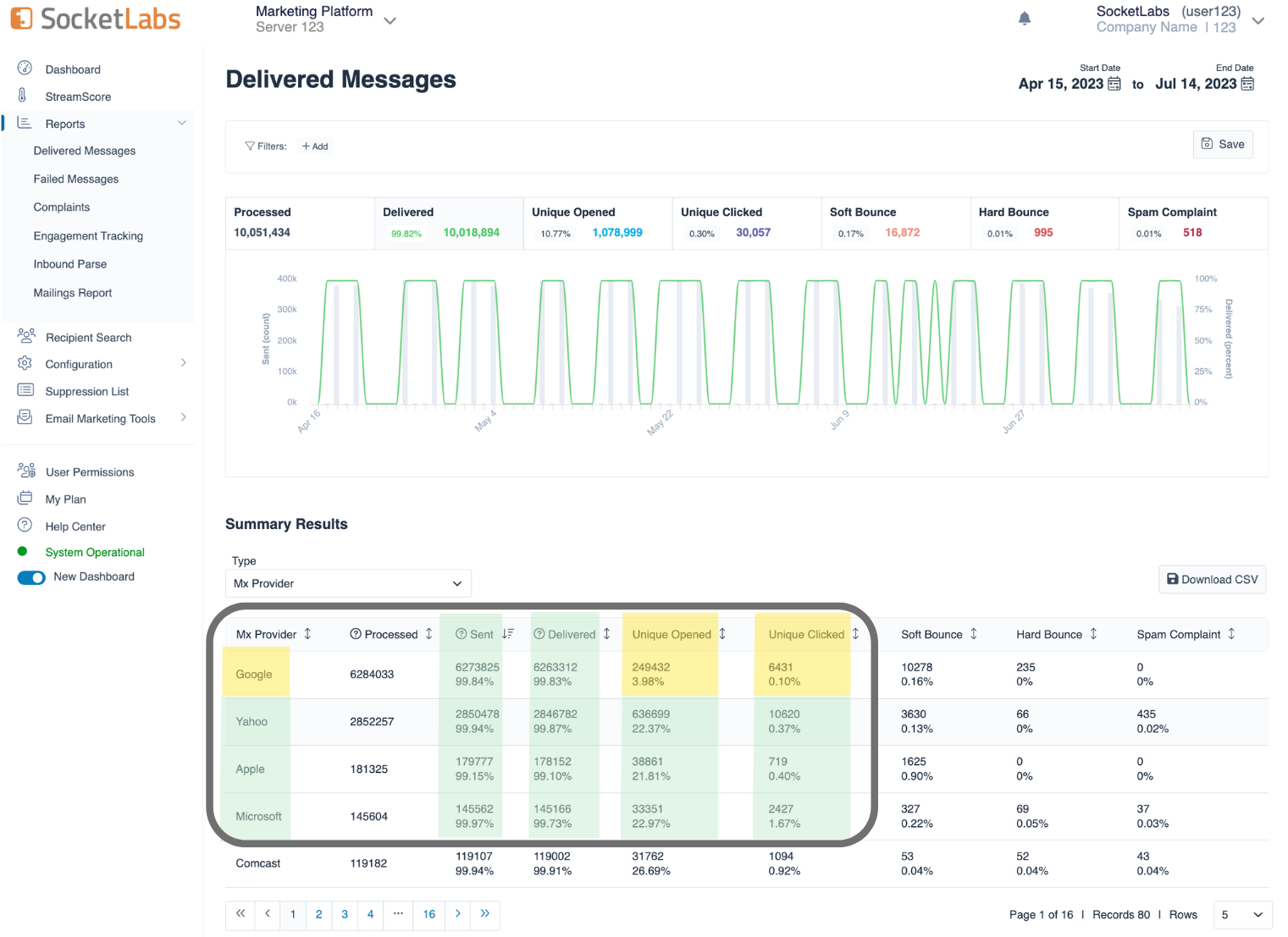
At Google, click rates are lower than the rest…but the REAL story is open rates.
The sender’s open rates at Gmail are monumentally lower than any other provider. Not to the tune of a couple points or maybe even 10% lower. No.
Brian discovers the open rate at Google is a dismal 4%, while it’s averaging 22% at the other top three destinations they send to — that’s almost seven times worse.
Here is the very serious issue with this: More than half of our sender’s list is comprised of Gmail users. When you consider how low engagement is at this particular provider, it becomes a little easier to understand why email engagement is so low for this sender as a whole.
Cracking the Case
Now Brian’s got the direction he needs. Instead of figuring out how to help the sender improve engagement across the board by making major changes to their email practice as a whole (which is likely not a bad idea, but won’t be fast or easy), he can help them resolve the main problem and then their program will actually recover on its own.
StreamScore’s algorithm pulls in data from more than 35 various first- and third-party data points including Google’s Postmaster Tools (GPT), so we can confidently link a poor reputation at Google to the issue. Brian provided us with a screenshot of their domain reputation over the last 120 days, straight from GPT, so we can get a better sense of how Google views this sender.
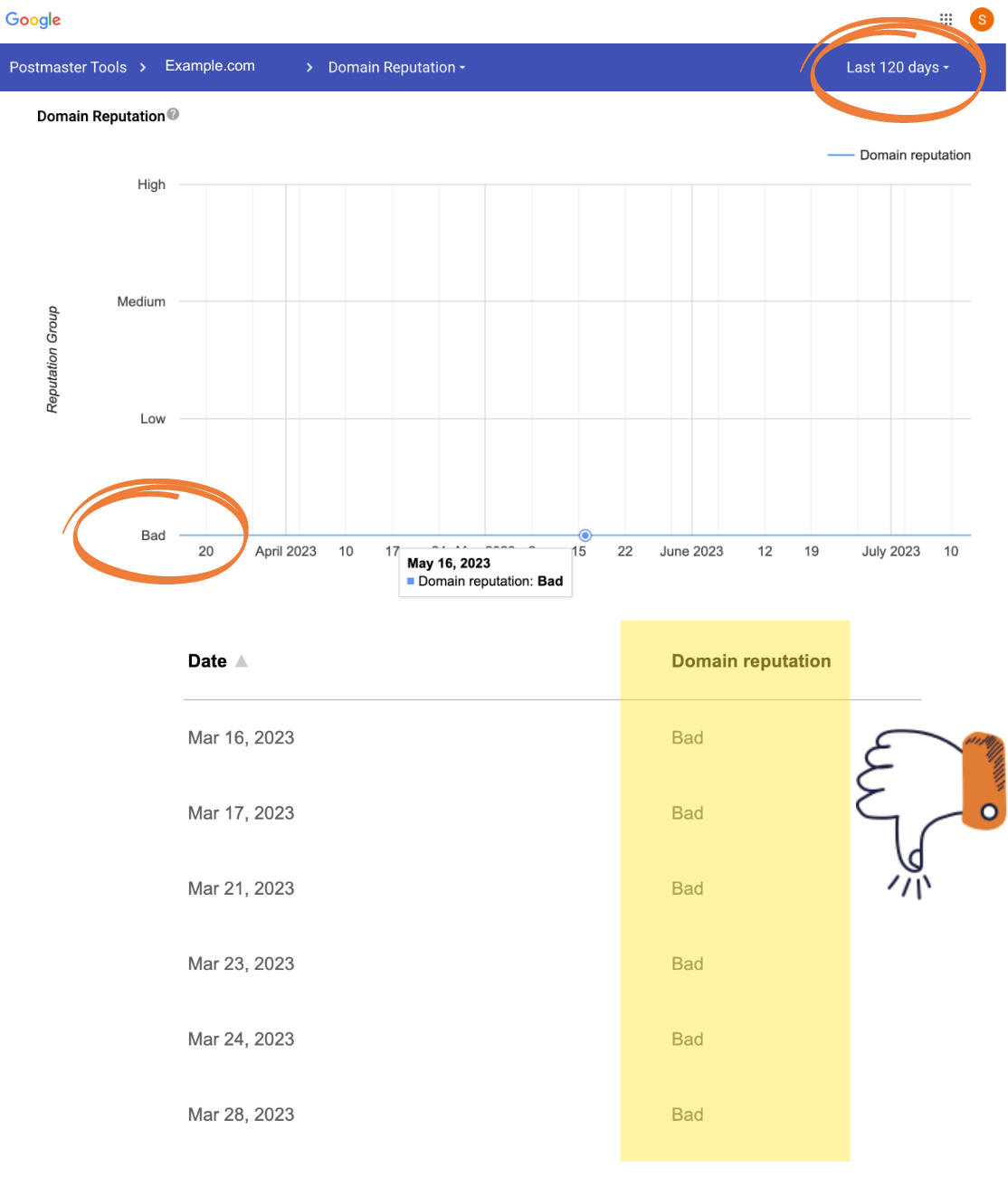
At this point, once the sender is aware of this problem, if they’re sending from other ESPs they would need to contact support to get help. Experts like Brian are hard to come by, so a response from an expert would require an escalation and could take days to arrive.
But this is SocketLabs. Our sender is on our Enterprise plan and gets a dedicated customer success manager who has direct access to Brian.
Using our StreamScore though, you won’t even need guidance from support because the tool itself provides insight into what’s gone wrong and what’s required to resolve it.
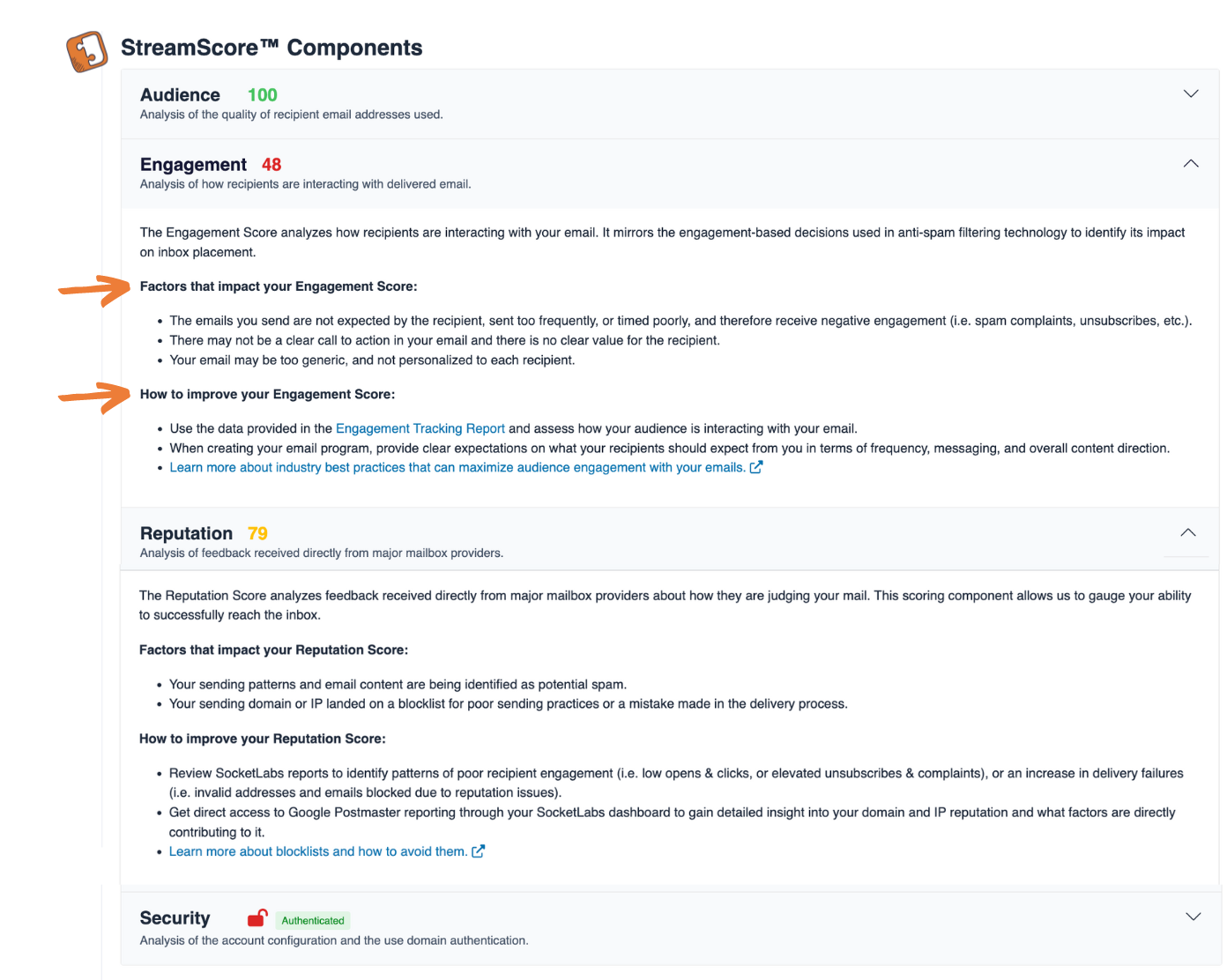
Using this lens, he suspects it isn’t about content alone and is likely more driven by segmentation. Knowing the majority of our sender’s list is Gmail addresses — a destination known for having spam filtering that is heavily focused on recipient engagement — two activities stand out.
First, he notes they send one email to their entire list each time they deploy messages. Segmentation is key in improving performance. If you segment your lists according to attributes like how often recipients interact with mail or where they’re located to better personalize the content, you’ll often find your subscribers feeling more connected to your brand, more likely to open and click, and less likely to delete without opening…or worse, report as spam.
While segmentation is a good step, it’s probably not the biggest step to take. They also need to start sunsetting unengaged addresses on their lists. Here’s an example: Removing any sender who hasn’t opened an email or logged in to their account in six months or more.
When you combine these two activities, segmenting and sunsetting, you can expect to see a boost in engagement because you can create lists of your most engaged subscribers and send to them more often, while still sending to your sometimes-engaged subscribers — just, less often. Gmail will notice that boost in engagement with your emails, which in turn will make them feel more comfortable delivering them to the inboxes of their users.
If our sender wants to return to the inbox where their emails will be seen by recipients at their largest destination, Gmail, their email blast days must be behind them.
StreamScore is your Partner in [Solving] Email Crime
Digital magazines are certainly not the only industry relying on email engagement to stay afloat. Without the ability to self-navigate and click into granular insights (with included recommendations to improve performance), they’re doing not much more than taking stabs in the dark. It could be this, it could be that.
Other ESPs can get you halfway to an answer, but when all you’re looking at are numbers you’re not happy with, you’re on your own in figuring out why and how to correct your path.
With StreamScore, you know exactly what went wrong and why it happened. You’ll understand where the problem lies, whether it’s with you, a MBP-level issue, or whatever it may be. And you won’t need to wait days for someone to help you. The power is yours.
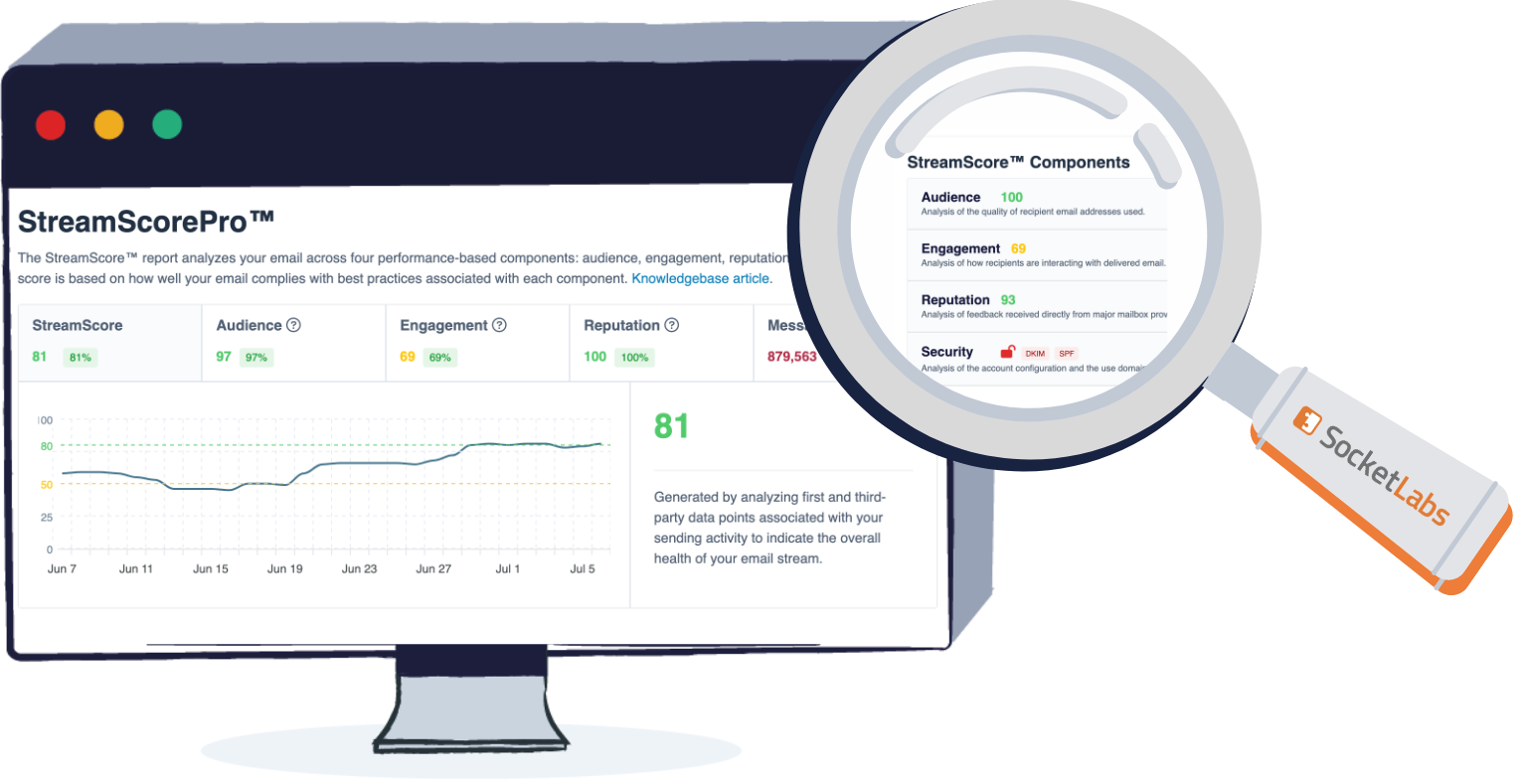
What can StreamScore do for you? Send with us to find out. It will be at work specifically for you, because while use case stories are fun, nothing is better than improving your own performance, right?








